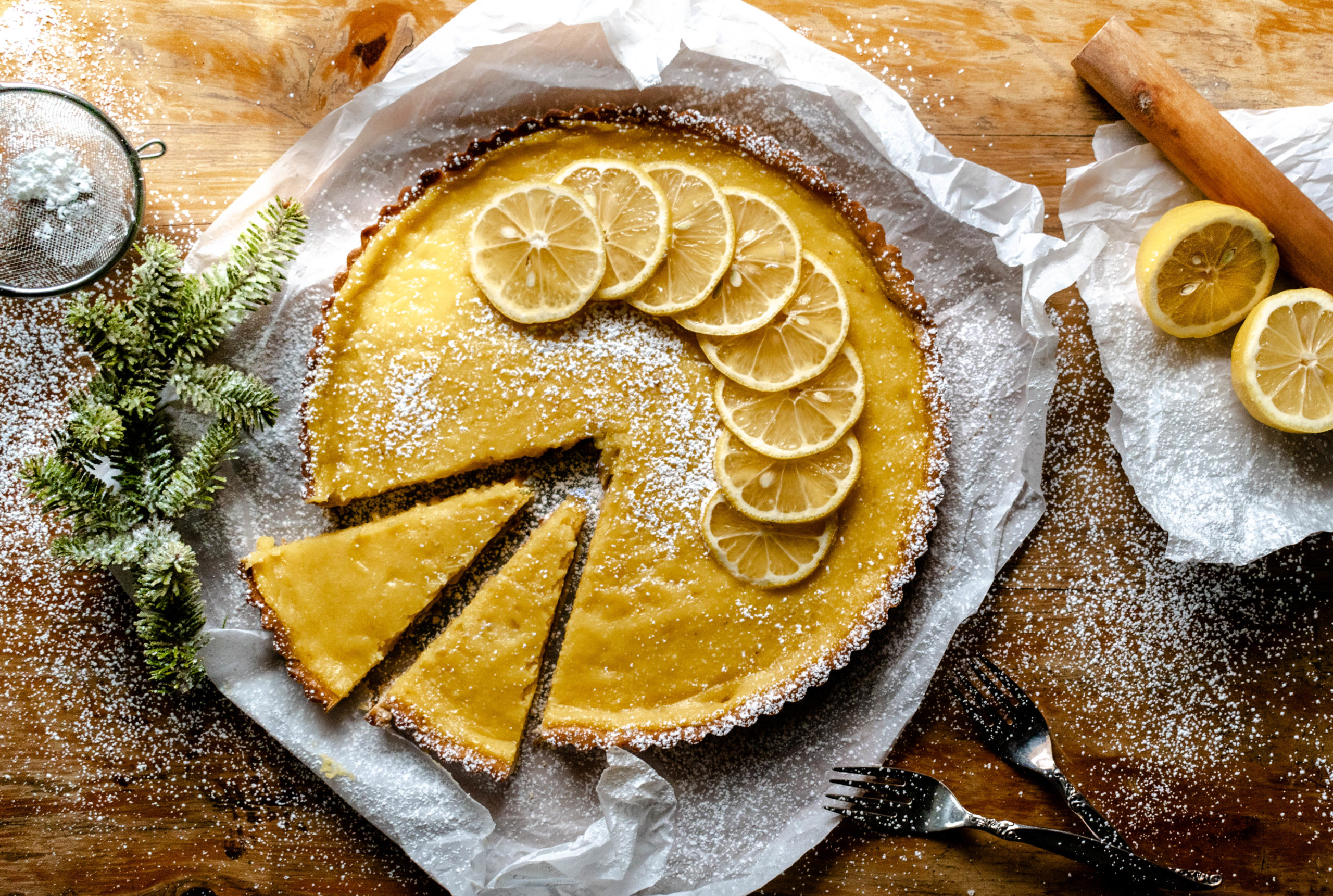Short Guide to Tarts (The Baking Kind)

Queen of Tarts
I should have known I would fall in love with my tart pan.
Being an anglophile, I always loved the term “tart” rather than other, less colorful and more hardcore words describing a vivacious lady. Like many things, the term’s meaning varies, from “pretty woman” to “prostitute” to “open pastry case containing a filling,” which is the tart we are concerning ourselves with here today.
My mom gifted me her tart pan, which hammered down the final nails in the coffin that read “I don’t really get excited about American Pie” (the baked good, not the film, though that doesn’t excite me much either. I’m more a horror/cult/documentary type girl…).
Nowadays, any scrumptious, decadent, or unique flavour combination I can think of, I would rather make into a tart than a “traditional” American pie. I think Apple Pie has nothing on Tarte Tatin.
Why? I have no idea.
It could be that it is more simple to make a tart crust and only one at that. Some shortbread textured crusts can even be put into the tart pan without rolling them out.
Perhaps it is how tarts show off the beauty of what is inside them more than many pies.
For me, I think I’m a neat freak. I just can’t resist the trimmed edges of a tart. That being said, I think the rustic look of a hand made tart (one made by turning the edges in rather than using a tart pan) is equally as beautiful.
Bottom line is, I’ve made my share and have some tips & tricks I’ve learned along the way.
Types of Tart Dough
I love my food processor. Making tart doughs in the food processor has become an absolute pleasure and deters me every time from purchasing store bought dough in the freezer section. I do miss the tactile wonderland that is making dough by hand. Your fingers feel when the texture is right; however, either way, you can do this. Even if you just love making cookies and the idea of a tart scares you.
The basic differences between tart dough (it’s in French, but don’t be scared) —
Pate Brisee (shortcrust pastry): The classic pie/tart pastry. Usually made with flour, salt, chilled butter, and ice water. If a sweet tart, sugar can also be added, but this type of dough is typically used for savory tarts, my favorite of which being onion/shallot tart and tomato tart.
Pate Sucree (sugar pastry): The same as the Pate Brisee, but always with sugar in the dough, therefore intended for sweet tarts. Usually also includes an egg yolk. Any dessert tart will work with the Pate Sucree.
Pate Sable (sandy tart): A shorter, more crisp and cookie like version of the Pate Sucree. Uses softened/room temperature butter, sometimes confectioners sugar, and additional milk or cream as a liquid binding agent. This tart dough can also be used with any dessert tart, but it works particularly well with classics like Tarte Tatin and Frangipane Fruit Tarts with sweeter and wetter fillings, since it holds up well.
Tips, Mistakes, Choices
What I learned in my tart making practices:
- Pulse (in a food processor) or rub by hand the initial butter flour combo until it resembles medium grains of sand.
- When adding the liquid agent (ice water or milk usually), don’t obsess about the specifics of the recipe. Add a little more or less if you feel it is necessary. Trust yourself. If you miscalculated, you can always add in a little more flour to balance.
- I had a delicious Pate Brisee recipe that became too soft when formed into the tart pan before refrigeration. Other times, I was able to roll the lightly kneaded dough pre refrigeration/freezing between two pieces of plastic wrap, which prevents the dough sticking to the rolling surface. It also allows for easier transportation of the dough to the tart pan. Whether before or after sticking the dough into the pan, you will have to freeze or refrigerate at some point, so the filling can be safely added.
- I also use the best piece of advice from Queen Mary Berry when adhering the tart to a very well buttered or cooking sprayed tart pan: use a small piece of leftover tart dough to adhere the dough to the grooves / sides of the pan. Your fingers can carry too much heat unlike the dough.
- My own challenges when blind baking the tart crust came in the form of the sides of the tart dough shrinking from the top of the mold, ruining many a food photograph. It turns out I wasn’t (gently) pushing the dough into the bottom walls of the pan enough, thereby allowing for normal shrinkage during the blind baking process. I also now leave just a little bit of extra dough as neatly as I can at the top of the sides so it also shrinks just enough (usually).
- I recommend always blind baking your crust. Tarts have very wet fillings including stock for savoury tarts, along with watery vegetables like tomatoes, and wetness from fruity juices and creamy fillings that seep as a part of many a sweet-tart.

- I usually blind bake using the same mason jar full of beans on a 375 or 400 degree oven for 12-14 minutes, after which I bake, uncovered, for an additional 5-7 minutes. You’ll know the crust is ready when just golden brown. Remember, it is going to bake again so it doesn’t need to be completely baked.
- Last well known tip that keeps tarts perfectly shaped: Always pierce the bottom of the dough with a fork several times before blind baking. It prevents the crust from puffing up.
Of course, you can avoid 80% of these challenges by making a rustic tart and just turning in the edges of the dough. I’m not sure about blind baking those, or whether filling seepage becomes a problem since there are no real vertical walls. I will work on some and report back.
Until then, have fun with tarts. Once you realize the simple choices of dough and the relatively easy ways to streamline the process, the sky is the limit with savory and sweet fillings.
Below are some of the tarts I’ve made in the one pan that my mom gave me. I am so happy that she did. That moment when you sit the finished tart on a high place and ease the tart pan walls off (smoothly if lucky), there is a great moment of liberty, knowing that your tart can exist in the world without a pie plate.
So go on, love, be a tart and be proud of it.
Berry Tart
Plum Clafoutis (My First Tart)
Pear Frangipane Tart
